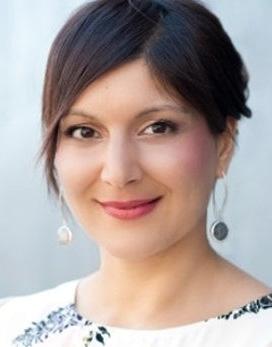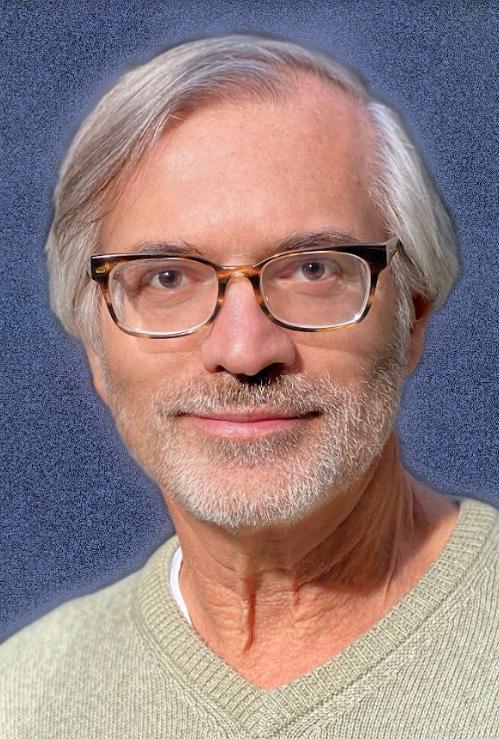The ME/CFS Long-Haul Connection

How Long-Haul is Changing The Understanding and Treatment of ME/CFS
and Chronic Illness



How Long-Haul is Changing The Understanding and Treatment of ME/CFS

Nafysa Parpia, ND, has spent the last decade treating patients with complex chronic illnesses from all over the U.S. and worldwide. She specializes in tick-borne illness, environmentally acquired illness, mold/mycotoxin illness, autoimmunity, fibromyalgia, and Long COVID, ME/CFS (Chronic Fatigue Syndrome). She uses cutting-edge laboratory tests and deep intuition applied to the full range of scientific data to create comprehensive treatment plans that are highly personalized.
Dr. Parpia’s targeted system of care includes a synergistic blend of regenerative medicine, oral and intravenous micronutrient therapies, peptide therapies, botanical medicine, pharmaceuticals, injection therapies, functional nutrition, and lifestyle counseling.
Eric Gordon, MD, President of Gordon Medical Research Center, is the clinical director of Gordon Medical Associates, specializing in complex chronic illness. In addition to clinical practice (40+ years), Dr. Gordon is engaged in clinical research.
He has focused on bringing together leading international medical researchers and cutting-edge clinicians focusing on ME/CFS, Lyme disease, autoimmune diseases, and autism. He combined forces with Dr. Robert Naviaux and his research into metabolomics, mitochondrial function, and chronic inflammatory disease. Dr. Gordon also has co-authored with Dr. Naviaux a groundbreaking study, “Metabolic Features of Chronic Fatigue Syndrome,” published in the Proceedings of the National Academy of Science (PNAS).
Gordon Medical Associates is also a collection site for the Lyme Disease Biobank, providing patient samples to researchers worldwide.




While the name has evolved over the years, it remains one of the most mysterious conditions on the planet. Yet it affects an estimated 2.5 million people in the U.S. alone. According to the CDC, 90% of cases haven’t been diagnosed.
Now commonly referred to as Myalgic Encephalomyelitis/Chronic Fatigue Syndrome (ME/CFS), the condition results in a complex array of symptoms that fluctuate over time.
Patients often report becoming bedridden after the simplest task, like doing the dishes or taking a short walk. Their symptoms range from headaches and muscle and joint pain to the inability to keep down or digest food.
But for years, physicians would send ME/CFS patients away, often suggesting that the pain and crippling fatigue were “all in their head” or a sign of laziness or simply depression.
While the last 40 years have seen a slight increase in respect for the disease, only a handful of physicians are trained to tackle treatment at its root. That is, until the recent COVID-19 pandemic. COVID (and the subsequent cascade of patients reporting debilitating symptoms that persist long after the virus has resolved) has sparked a renewed interest in ME/CFS and may be shining a new light on treatment options.
Has COVID-19 given doctors and researchers more insight into a handful of long-term chronic illnesses? Absolutely. And much of the evidence about effectively resolving complex chronic disease points to a healing roadmap we’ve been using at Gordon Medical for decades.
Read on to learn more about ME/CFS, its link to long-COVID, and the possible mechanisms behind both.
ME/CFS is a disabling and life-altering disease associated with symptoms that can change over time, range from mild to severe, and differ completely from person to person. An estimated one in four patients can’t work or leave their homes, while the most critically affected cannot leave their beds.
One of the key characteristics of the disease is labeled “post-exertional malaise,” which is an all-over sick feeling similar to how you feel at the onset of the flu. This disabling fatigue can be brought on by both physical and mental exertion and is what initially gave the illness the name “Chronic Fatigue Syndrome.”
While ME/CFS checks all the boxes of a severe medical condition, it wasn’t always recognized or respected by the medical establishment.
In fact, up until the 1990s, ME/CFS was widely classified as a purely psychological condition that was only treated with talk therapy, cognitive behavioral therapy, exercise, and mindfulness practices. While these therapies can be important stepping stones to healing, they typically don’t resolve ME/CFS on their own.
For decades, millions of patients were discredited, prescribed symptom-reducing medications, or turned away completely — because there’s not a single biochemical marker or diagnostic test that can establish a solid diagnosis, let alone one treatment plan that works for everyone.
In other words, ME/CFS and other post-viral syndromes are complex conditions requiring more research, time, and money to develop clear diagnostic tests and treatment options.
While many diseases are more easily diagnosed, there are over 60 symptoms reported by patients with ME/CFS that include (but are not limited to):
•Post-exertional malaise
•Brain fog
•Cognitive impairment
•Chronic flu-like symptoms
•Chronic inflammation
•Digestive issues
•Headaches
•Orthostatic intolerance
•Chronic pain
•Non-provoked pain that can last months
•Profound fatigue
•Non-restorative sleep
•Sleep disturbances
•Stiffness
So, if there is no diagnostic consensus, what causes ME/CFS?
Before we dive into possible triggers, let’s look at a more recent medical phenomenon and how the two conditions might be related.
Long-COVID or “Long-Haul” COVID is a syndrome that presents weeks or even months after being infected with SARS-CoV-2.
Like ME/CFS, Long-COVID is characterized by a wide range of complex symptoms and conditions, from physical to neurological to emotional. Symptoms vary in severity and frequently lead to extreme fatigue, weakness, pain, and cognitive dysfunction that linger long after a virus is no longer detectable in the body.
Both conditions are considered “post-viral syndromes” — conditions triggered by a reaction to a virus that, instead of resolving normally, continues in a perpetual state of inflammation even when the virus has fully resolved.
Still, the similarities between ME/CFS and Long-COVID are difficult to ignore. That’s likely because they’re triggered and perpetuated by some of the same things.
Interestingly, new research suggests that there might be a persistent virus in the tissues of both Long-COVID and ME/CFS patients.
Additional research indicates viruses can also hide in the gut, even months after viral symptoms seem to resolve. However, the only way to confirm hiding viruses is with biopsies.

If you look at most medical resources on ME/CFS, they’ll report that the cause of the disease is currently “unknown.” But after decades of seeing patients debilitated by the illness, we see that some patients have identifiable triggers. And treating these triggers, as well as the immune dysregulation they cause, can aid in recovery.
The fact is, there’s no one cause of ME/CFS, which makes it a complex illness to study and which cannot be managed with a single treatment plan. Instead, it’s crucial to look at the whole patient — their health history, blood labs, current and past viral infections, history of tick-borne diseases, disorders of the microbiome, and so much more.
Looking at this list, one thing is clear: chronic inflammation is at the root of all post-viral syndromes and chronic illnesses. And inflammation comes from many different sources, including chronic stress, poor digestion, low-grade exposure to toxins like mold — even tooth infections!
Before we dive into the inner workings of the immune system and how viruses like COVID-19 may be triggering a catastrophic increase in cases of long-term post-viral syndromes like ME/CFS, let’s look at some of the possible triggers:
• Persistent inflammation from previous infections, including:
- SARS-CoV-2
- Epstein bars
- HHV-6
- CMV (Cytomegalovirus)
- Herpes simplex viruses
- Chlamydia
- Mycoplasma pneumonia
- Tick-borne illnesses, including Lyme disease
• Parasites
• Mold
• Dental infections
• Sinus infections
• Low-grade, persistent exposure to toxicants
• Heavy metals
• Hormone imbalances
• Smoke inhalation
• Gastrointestinal imbalances
• Chronic stress
• Immune dysregulation
• Low-grade infection
• Standard American Diet
• Obesity
• Blood sugar dysregulation
That means you could have a combination of many chronic low-level infections and stressors that send your body into a chronic inflammatory state and slowly bring about a condition like ME/CFS over time.
Or, you may unknowingly suffer from low-level chronic inflammation, which is often asymptomatic. Examples of unrecognized low-level inflammation are diabetes, hypertension, and atherosclerosis. A brief bout with a virus like COVID could send you into an inflammatory spiral, suppressing immunity and allowing dormant viruses to become active
It has also been seen in Long-COVID that chronic inflammation can also lead to immune system hyperactivity as seen in autoimmune conditions and Mast Cell Activation Syndrome.
To understand how we tend to post-viral syndromes in our clinic, let’s look to COVID for some more information on your immune system’s reaction to viruses.
The COVID pandemic has given doctors and researchers a lot to re-examine when it comes to how the immune system works and the cause (and management) of chronic illness.
Contrary to what some might think, the infection may not be persisting in many cases of post-viral syndromes like Long-COVID and others.
Some theorize that a piece of the virus (the spike protein) gets stuck in the monocyte (white blood cell) that becomes a macrophage (an immune cell once it resides in tissue as opposed to the bloodstream).
Of course, this process doesn’t happen overnight. Symptoms can take weeks or even months to manifest, leaving many people baffled about how they got so ill when the virus was long gone.
The virus may not be detectable in the body, but it did trigger a healing response called the Cell Danger Response (CDR). And understanding this concept could be our key to healing chronic conditions and other illnesses; because this healing cycle is triggered any time your cells sense illness or infection — not just when it encounters a COVID virus.
In other words, the virus goes away, but the cells get stuck in a stage of healing that leads to chronic inflammation.
And it’s this chronic inflammation that causes long-term symptoms, many of which become or mimic ME/CFS.

Your body is designed to heal itself. When you cut yourself, blood clots quickly, stopping blood flow and protecting the wound. Then, white blood cells flood the area, doing their job to fight infection and oversee the healing process.
Similarly, your body has built-in systems that trigger in response to internal assaults like infections and pathogens, sending your cells into a cycle of healing meant to restore function.
Again, this healing cycle is called the Cell Danger Response (CDR), and it activates any time your immune system is under attack — whether from exposure to mold and other toxicants or a common virus.
CDR is split into three distinct phases: CDR1, CDR2, and CDR3.
Post-viral conditions settle in when enough of your cells are stuck in one of these three phases of self-defense and healing. And understanding how each phase works may be the map to navigating chronic illness, including ME/CFS and Long-COVID.
CDR1 is the first phase of cellular healing, triggered when the cell is first injured. In other words, an injury or infection turns on the healing cycle in any affected cells.
Mitochondria are known as the powerhouses of your cells, and that’s true. But they also have other jobs — namely, to protect the cell from assault.
So, when the mitochondria sense danger, they react intelligently by slowing down energy production and increasing oxygen concentration in the rest of the cell. Higher oxygen levels create a hostile environment that destroys pathogenic invaders like viruses and bacteria.
Higher oxygen levels inside the cell and the export of ATP (adenosine 5’-triphosphate —the energy currency of the body) outside of the cell are literally sending signals to other cells that the cell is trying to defend itself and that there is danger nearby. This results in an inflammatory response.
At the same time, the mitochondria are no longer making the raw materials your body needs to grow and repair. And the cell membrane also becomes less permeable, so there’s less cell-tocell signaling, and it’s harder for viruses to enter or leave the infected cell. Again — this is your body’s innate intelligence at work, as viruses can use those same raw materials to replicate and make more of the virus.
But the CDR1 reaction leads to oxidative stress in the body, which is fine for a few days as your body fights off the virus or other bugs. However, your cells can get stuck in this first healing phase, leading your cells to remain in a loop of constant “attack mode.”
Unfortunately, this is the phase that most postviral syndrome patients, including ME/CFS sufferers (and other sufferers of post-biological insults), get stuck. Chronic oxidative stress and inflammation lead to those familiar symptoms we associate with infection: extreme fatigue, flu-like achiness, headaches, and cell and tissue damage over time. In addition, the decrease in cell-to-cell signaling can cause endocrine and autonomic (nervous system) dysfunction — all familiar traits of post-viral syndromes.
For years, physicians and patients were under the impression that oxidative stress automatically meant mitochondrial damage. In reality, your cells’ powerhouse is appropriately defending the cell, shutting down ATP production and increasing oxygen saturation.
Understanding this process can completely change how we approach healing chronic illness. We stop automatically attempting to restore mitochondrial function and instead help your system contain the damage and remove any threats so it can move into the next healing phase: CDR2.
The next phase of the Cell Danger Response is CDR2. This kicks in when the cell moves out of the defense phase and into a rebuilding phase. During this part of the healing process, your mitochondria are still not working at their full capacity, but they’re beginning to reconnect to their normal state.
Your cells are making more ATP (energy) than in CDR1 and using more oxygen, so oxidative stress inside the cell dissipates. However, now they’re also using something called
anaerobic glycolysis — a process of burning sugar for energy in the absence of oxygen. As both mitochondria and anaerobic glycolysis produce more energy, your body begins regenerating and restoring new cells and damaged tissues.
In CDR2, you might begin to feel better, but your energy isn’t at full capacity. If you stay stuck here, you could begin developing symptoms of high blood pressure, insulin dysregulation, or even cancer.
In CDR3, your mitochondria are back online, producing normal amounts of ATP, and the cell membrane is healing. Your body rebuilds specific cells, puts them in place, and turns them back on, restoring function and communication with surrounding areas.
CDR3 is also a learning phase. In the case of infection, your immune system builds antibodies to protect against the threat — that way, if the infection returns, your immune cells
will recognize it and can kill it immediately before it does more damage.
However, CDR3 is still a healing phase, and cells can also get stuck here, perpetually confused about how to communicate or work effectively. When the cell is stuck in CDR3, hormone panels may look normal, but the body isn’t responding normally but hormone blood tests come back normal. It is actually the cells that aren’t aren’t responding as they are supposed to.
CDR1 DEFENSE PHASE
CDR2 THE REBUILDING PHASE
CDR3 THE RECOVERY PHASE
If ME/CFS and other post-viral syndromes are caused by chronic inflammation, it’s not enough to medicate or tamp it down — we want to get to the bottom of why you’re inflamed in the first place.
Root-cause medicine is crucial, but for many patients, there’s a step that comes before targeting the “root” — especially if the disease has been ongoing for some time. The secret is to treat the terrain by lowering toxic load and restoring immune function to allow for healing so your cells and tissues have a chance to recover fully.
At Gordon Medical, it’s been our life’s work to find holistic solutions to complex chronic diseases like ME/CFS and Long-COVID. In fact, we’ve been practicing root cause and terrain-centered medicine over symptom management for the last 20 years — specializing in post-infectious illnesses that have been poorly understood and poorly treated.
While the COVID pandemic has been devastating for millions, it has sparked a renewed interest in how basic immunology works. And we’re bound to see even more research supporting the rootcause treatment of chronic illness over disjointed approaches that keep people sick, bouncing from specialist to specialist.
The Cell Danger Response is a complex system. We don’t yet know how the cells move from one healing phase to another. However, CDR does provide us with a roadmap of where to start with each patient, so we can create an internal environment where your immune system can reset.
We specialize in customized treatment plans because every person requires a unique pathway to healing. Sometimes it is indeed supporting mitochondrial function. Treatment is different for each person; for example sometimes it starts with resetting the microbiome, for others it is detoxification or limbic system retraining.
Symptom management isn’t healing you. It’s only quieting the pain. It’s like firing the off-key violinist when you really need to hire a new conductor. Because a healthy immune system is a symphony that’s playing in harmony together.
Healing can feel like a choose-your-own-adventure novel. And it is. The road forward lies in your ability to navigate your health with trusted professionals.
If our approach to healing resonates with you, schedule your free consultation with one of our specially-trained physicians.

At Gordon Medical Associates, our patients come not only from the Northern California Bay area and the greater San Francisco area but the entire country and around the globe for individualized help with a wide range of problems, from chronic pain and hormone balancing to ME/CFS, mold illness, Long-Haul, Lyme disease, and tick-borne illnesses.
Learn more at: www.GordonMedical.com
Gordon Medical Associates 361 3rd Street, Suite J San Rafael, CA 94901 (415)757-6100




NOTE RESOURCES:
https://www.cdc.gov/me-cfs/about/index.html
https://journals.plos.org/plosbiology/article?id=10.1371/journal.pbio.3001687#:~:text=Epithelial%20 cells%20in%20the%20respiratory,can%20be%20recovered%20%5B127%5D